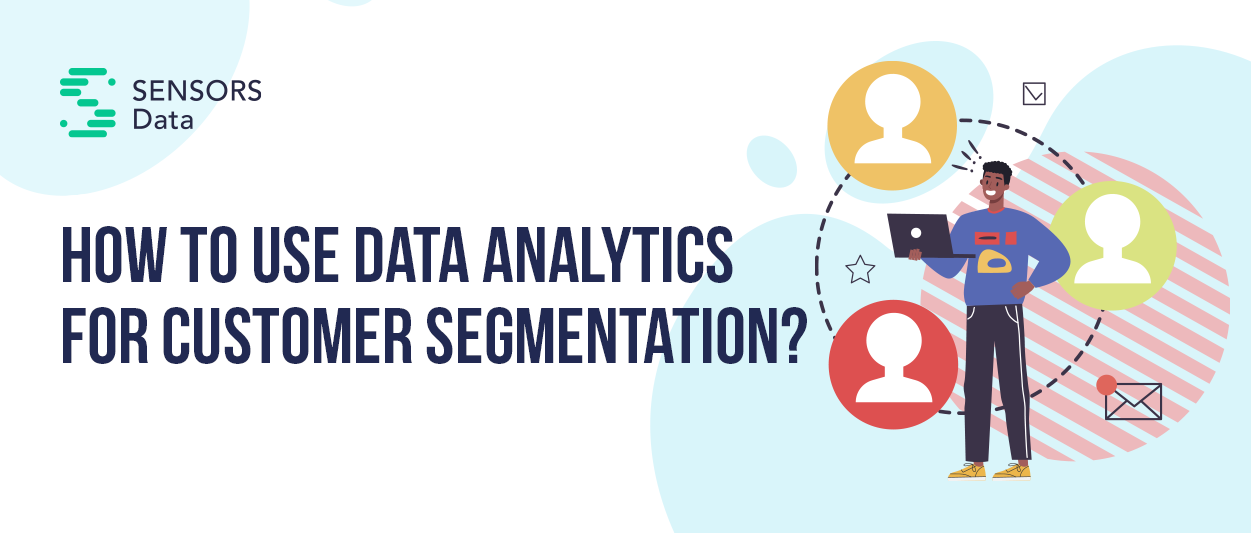How to Use Data Analytics for Customer Segmentation?

In the modern digital business environment, understanding and meeting customer needs is crucial for business success. Customer segmentation is an effective strategy that divides a customer base into distinct segments, allowing businesses to better understand customer needs and preferences, and improve personalized marketing efforts. This article details the concept, purpose, and value of customer segmentation, explores how data analytics is used for customer segmentation, and demonstrates how excellent data analytics products like Sensors Analytics can effectively help businesses achieve data-driven and refined management.
What is Customer Segmentation?
Customer segmentation refers to the process by which enterprises divide customers into multiple categories based on attributes and characteristics according to certain rules. These characteristics can include demographic data (such as age, gender, income level), geographic location, behavioral data (such as purchase frequency, purchase amount), and psychological characteristics (such as interests, values). Through customer segmentation, businesses can better understand and meet the needs of different customer groups.

SensorsData offers more powerful customer segmentation capabilities than other platforms like Google Analytics, supporting multi-dimensional and cross-platform user segmentation. Enterprises can segment users based on basic information, behavior data, device types, and more, achieving more precise marketing strategies and personalized services. For instance, an e-commerce company can segment users based on browsing and purchase behavior across websites and apps, formulating corresponding marketing strategies for different groups, improving conversion rates and customer satisfaction.
SensorsData's segmentation methods are diverse, supporting rule-based segmentation through the UI and providing SQL query-based segmentation and Entity Query Language (EQL) designed for segmentation scenarios, reducing implementation complexity and meeting enterprises' personalized needs flexibly and efficiently.

The Purpose and Value of Customer Segmentation
Enhancing Marketing Effectiveness
Through customer segmentation, businesses can develop personalized marketing strategies for different customer groups, thereby improving marketing effectiveness. For example, businesses can offer exclusive discounts and VIP services to high-value customers, and attract potential customers through targeted advertising.
Optimizing Products and Services
By understanding the needs and preferences of different customer groups, companies can optimize their products and services, thereby increasing customer satisfaction and loyalty. For example, some customers may prefer high-end products, while others may be more focused on cost-effectiveness. Understanding this information allows businesses to adjust their product lines and pricing strategies to meet the needs of different customers.
Moreover, after segmentation, businesses can group their commercial teams accordingly. For instance, a company may categorize customers into various types based on attributes such as scale, industry, function, and region. Concurrently, they can divide their internal customer success teams into several groups, each responsible for a few types of customers. This approach allows each customer success group to focus on serving specific types of customers, continuously accumulating service experience and improving service quality.
Increasing Customer Retention Rate
Customer segmentation helps identify customer groups at high risk of churn, allowing businesses to take proactive retention measures. For example, by analyzing customer behavior data, businesses can identify customers who are reducing their purchase frequency and take timely actions to retain them.
How to Use Data Analytics for Customer Segmentation
Data Collection and Integration
The first step in customer segmentation is collecting relevant data. Businesses can collect customer data through various channels, including website analytics, social media activities, Customer Relationship Management (CRM) systems, and sales records. The quality and accuracy of the data are crucial for the effectiveness of customer segmentation, so businesses need to ensure the comprehensiveness and authenticity of the data.
Data Preprocessing
Before performing data analytics, businesses need to preprocess the collected data. Data preprocessing includes data cleaning, data standardization, and data integration. Data cleaning removes errors and missing data; data standardization unifies data of different formats; and data integration combines data from different channels into a complete dataset.
Creating Customer Profiles
Customer profiling is a comprehensive description of customer characteristics and behaviors based on data analytics. By deeply analyzing customer data, businesses can create customer profiles for different segments, including age, gender, geographic location, purchasing preferences, and interests. This helps businesses understand the characteristics of different groups more comprehensively.
Behavioral Analysis and Model Building
By deeply analyzing customer behaviors, businesses can build predictive models to identify customers' purchase intentions, preferences, and behavioral trends. This can be achieved through machine learning algorithms such as decision trees and cluster analysis. Model building provides businesses with predictive information, guiding targeted marketing strategies for different segments.

Cross-Channel Integration
In a multi-channel business environment, customers may interact with businesses through different channels. By integrating data across channels, businesses can gather data from different sources to form a more comprehensive view of the customer. This helps to accurately identify cross-channel behaviors and provide a consistent customer experience.
Personalized Marketing Strategies
Through customer segmentation, businesses can develop more specific and personalized marketing strategies. For high-value customers, unique discounts or exclusive services can be offered; for potential customers, targeted ads and promotional activities can be used to attract their attention. Personalized marketing strategies help increase user engagement and satisfaction.
Real-Time Data Monitoring
Customer segmentation is a dynamic process, as customer behaviors and preferences may change at any time. Therefore, businesses need to establish real-time data monitoring systems to regularly update segmentation information. Real-time monitoring allows businesses to adjust and optimize customer management strategies promptly to adapt to market changes.
Continuous Optimization and Feedback Mechanism
Customer segmentation is a continuous optimization process. Businesses need to establish feedback mechanisms to regularly evaluate the effectiveness of segmentation and make adjustments based on feedback results. Through continuous optimization, businesses can better meet customer needs and increase user loyalty.
Compliance and Privacy Protection
When performing customer segmentation, businesses must ensure compliance with regulations and privacy protection. Adhering to relevant laws and regulations and ensuring the security and confidentiality of customer data is fundamental to the long-term development of the business.
Application of Data Analytics Platforms in Customer Segmentation
Sensors Analytics is an excellent data analytics product that can help businesses achieve comprehensive user operation analysis.
Behavior Tracking and Conversion Optimization:
Leveraging the innovative event+user+item analysis model, we offer in-depth recording and analysis of user interactions, supporting user-level big data analytics and dynamic user segmentation based on behaviors and tags. Our conversion funnel analysis identifies and resolves bottlenecks, optimizing user journeys and enhancing conversion rates.
Deep Customization Analysis:
Integrating top ten analysis models and industry benchmarks, we support deep and flexible analysis definitions for multiple roles, enabling enterprises to configure analysis models and perform multi-dimensional drill-down analyses based on their unique business models and data structures.
Advanced Data Governance and Data Processing Capabilities:
Providing granular access control for raw data, comprehensive data audit tracking, and flexible permission management, we ensure data consistency and security. Our platform efficiently processes large-scale data sets, ensuring the accuracy and high performance of real-time data import and export.
Local Compliance and Diverse Deployment:
Adhering to Asia-Pacific regulations, we offer various deployment options (such as on-premises and SaaS deployment) and localized data processing, supporting compliant cross-border data transmission.
Recommended for you
This site uses cookies to store information on your computer. Some are essential to make our site work; others help us improve the user experience. By using the site, you consent to the placement of these cookies.
